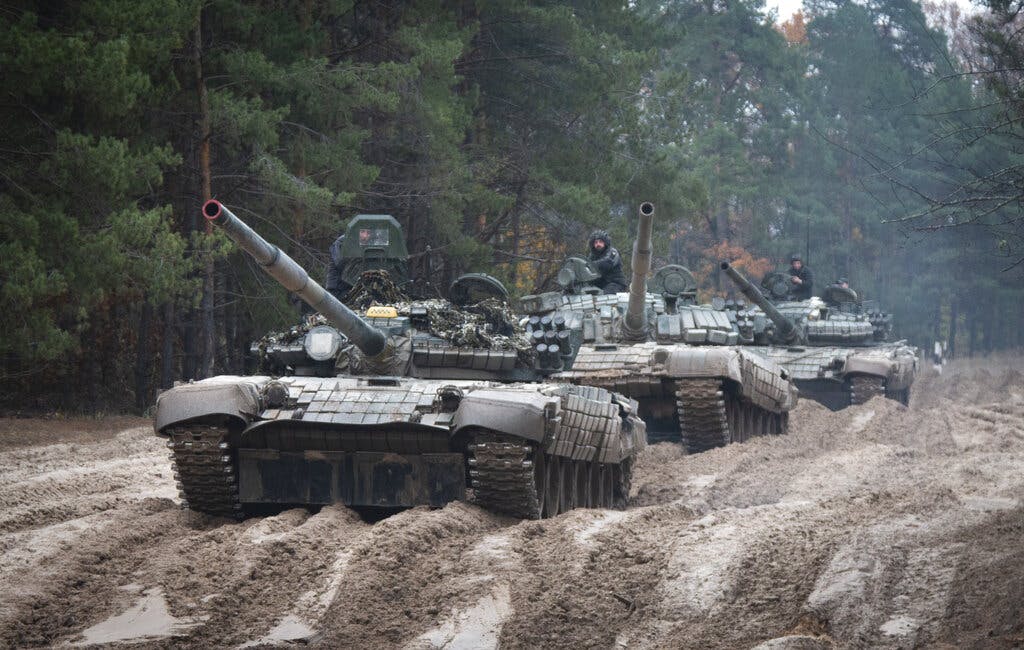France Moving Quickly Into Arms Dealing as Russia Stumbles in Ukraine and Sanctions Bite
‘The war in Ukraine has not been a particularly compelling advertisement for Russia’s leading-edge military technology,’ one analyst says.

France, as the Ukraine war highlights Moscow’s military flaws and Washington enforces sanctions, could emerge as the world’s second leading arms exporter behind America.
India approved this month the purchase of 26 French marine Rafale jets and three Scorpene-class submarines, and Qatar intends to beef up its air force with an additional 24 Rafales by 2025. In the meantime, Russian arms exports have fallen to some of their lowest levels since the collapse of the Soviet Union in 1991.
Between 2018 and 2022, France’s share of global arms exports rose to 11 percent, compared with 7.1 percent in the previous four-year period, according to a report published in March by the Stockholm International Peace Research Institute. Russia’s global arms trade decreased to 16 percent of the total from 22 percent in the same period.
It seems quite plausible that France will be even with Russia as a global arms exporter in the next three years, a senior researcher at the Stockholm institute, Pieter Wezeman, tells the Sun. If the trend continues, he adds, Paris could overtake Moscow’s second place within the next five years. Mr. Wezeman is one of the authors of the report.
There’s a package of factors that seem to be leading France’s expansion and Russia’s decline as a global arms export, Mr. Wezeman says. The list includes the increase in domestic production among recipients of Russian arms, America exerting pressure on countries that buy Moscow’s weapons, and the poor performance of Russian equipment during the war in Ukraine.
About two-thirds of Russian arms exports went to three countries between 2018 and 2022 — India, with 31 percent, Communist China, with 23 percent, and Egypt, with 9 percent, according to the report. Yet, Moscow did not deliver arms to Egypt between 2021 and 2022. Exports to Beijing have decreased in the last two years, and India has been diversifying its imports.
Despite the lack of transparency in arms-sale figures in Communist China, Beijing has “invested considerably” in modernizing its own weapons industry since 1991. It is attempting to become self-reliant in weapons and technologies for its armed forces, according to a 2020 report from the Swedish think tank. In 2020 the Communist Party’s chairman, Xi Jinping, ordered the Chinese armed forces to modernize by 2035.
Under Prime Minister Modi, India is striving to decrease its dependence on Russian imports. It is buying engines from America, jets from France, and submarines from Germany. It is also attempting to increase its domestic production. The Indian defense minister, Rajnath Singh, said this year that he plans to order weapons worth more than $100 billion through the local defense sector in the next decade.
Western sanctions have also affected Russia’s arms exports. Moscow is now facing challenges in importing components needed to produce some of the country’s missiles, tanks, and aircraft, a report published by the Center for Strategic and International Studies says.
“Sanctions create shortages of higher-end foreign components and force Moscow to substitute them with lower quality alternatives,” the report says. “For now, Moscow’s efforts at state-backed import substitution remain largely unsuccessful. This ultimately impacts Russia’s ability to manufacture, sustain, and deliver advanced weapons and technology.”
The war in Ukraine has been a “humbling showcase” for Moscow’s military technology, a senior fellow at the Peterson Institute for International Economics, Cullen Hendrix, writes in Foreign Policy. America assessed last year that Russia’s military equipment is suffering failure rates of 60 percent, according to Reuters. Images of its tanks with the tops blown off have been widely shared by the press.
“Whatever the reasons, the war in Ukraine has not been a particularly compelling advertisement for Russia’s leading-edge military technology,” Mr. Hendrix says.
America has been pressuring countries that buy equipment from Russia since before the war. In 2017, Congress passed the Countering America’s Adversaries Through Sanctions Act to discourage governments from buying weapons from Russia, North Korea, and Iran.
In 2021 Indonesia abandoned its plan to buy Russian fighter jets and decided instead to buy America’s Boeing F-15EX Eagle II and the French Dassault Rafale. In 2018, Washington sanctioned Beijing for purchasing a combat aircraft and a missile system from Russia.
“There are certain pressures and dynamics that lead countries to move away from Russia and look elsewhere,” Mr. Wezeman says. “France happens to be one of those countries where they go to.”

